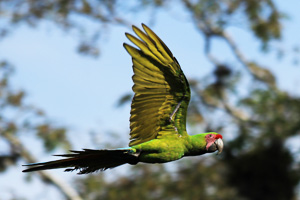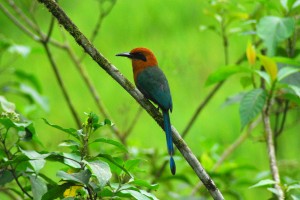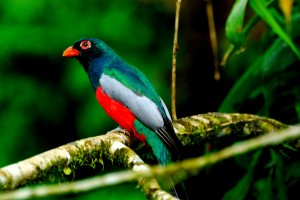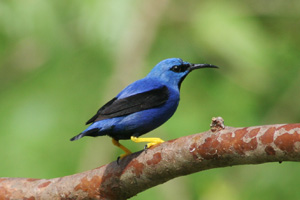 Shining Honeycreeper
Shining Honeycreeper
The shining honeycreeper (Cyanerpes lucidus) is one of two similar and strikingly-colored honeycreepers common in upper level forests and semi-open areas of Costa Rica. The bright yellow legs and feet of the shining honeycreeper are a primary distinguishing feature. At Selva Verde, it is most often encountered in pairs or small family groups. Although its prominent curved beak is specialized for nectar feeding, its main diet comprises succulent fruit.
The call is an unimpressive series of sharp staccato chitters, often intermixed with high thin peets. Researchers confirm this species illustrates the general rule that birds with elaborate colorful plumage often have inferior vocal endowments.
After pair formation, males of this species use song to stimulate females and to maintain the pair-bond. Often, song is used by both adults simultaneously, in duet fashion. Tests show that in this species, there is much individual variation in vocal components and local song dialects occur. The high degree of individuality in song is important for pair members attempting to maintain contact in thick cover.
Read more
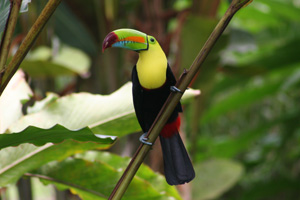 Keel-Billed Toucan
Keel-Billed Toucan







